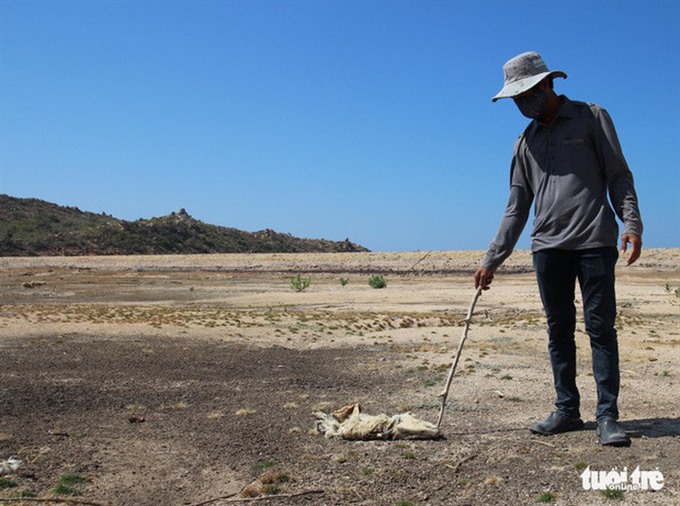 Society
Society

Some 11 reservoirs and several seasonal dams in the Southern Central province of Ninh Thuận have dried out, leaving 1,700 households without clean water.
 |
| The lack of water kills a large number of cattle. — Photo tuoitre.vn |
NINH THUẬN — Some 11 reservoirs and several seasonal dams in the southern central province of Ninh Thuận have dried out, leaving 1,700 households without clean water.
The information was released on Wednesday at a meeting between the local authorities and the Water Resource Directorate. Trần Văn Tuấn, chief of office under Ninh Thuận Province Steering Committee for Disaster Prevention and Rescue, said that because of the drought, 7,500 people do not have access to clean water for daily use, mostly in the districts of Ninh Hải, Ninh Sơn and Bác Ái.
Moreover, the areas severely affected by the drought are Thuận Nam District and some communes in the districts of Ninh Phước, Ninh Hải, Ninh Sơn, Thuận Bắc and Bắc Ái.
From February to April 10, the number of cattle who died was 785, including 578 sheep, 105 goats and two cows.
Phan Quang Thựu, deputy director of the provincial Department of Agriculture and Rural Development, said that until April 17, the total volume of 21 reservoirs was 120.56 million cu.m, accounting for nearly 62 per cent of the designed capacity.
As 11 small reservoirs and some other seasonal dams have completely dried out, district authorities have asked people to stop planting summer-autumn crops and to save water for daily activities and for livestock.
“It is estimated that an area of 6,000ha will not be planted this year,” Thựu told Tuổi trẻ (Youth) newspaper.
Therefore, the department asked the Government to support Ninh Thuận Province during the drought by supplying six 10cu.m water tank trucks for people suffering from water shortage and investing in pumping systems in the dried out reservoirs of Ông Kinh in Ninh Hải District and Phước Nhơn in Bác Ái District.
The construction of Tân Mỹ Dam will also be acclerated to connect water reservoirs.
Nguyễn Văn Tỉnh, head of the directorate, recommended that Ninh Thuận Province update and compare data of drought and water resources in the first three months of 2018 with the severe drought in 2015-16 to supply water to people and distribute water from reservoirs to localities engaged in agricultural activities. — VNS




